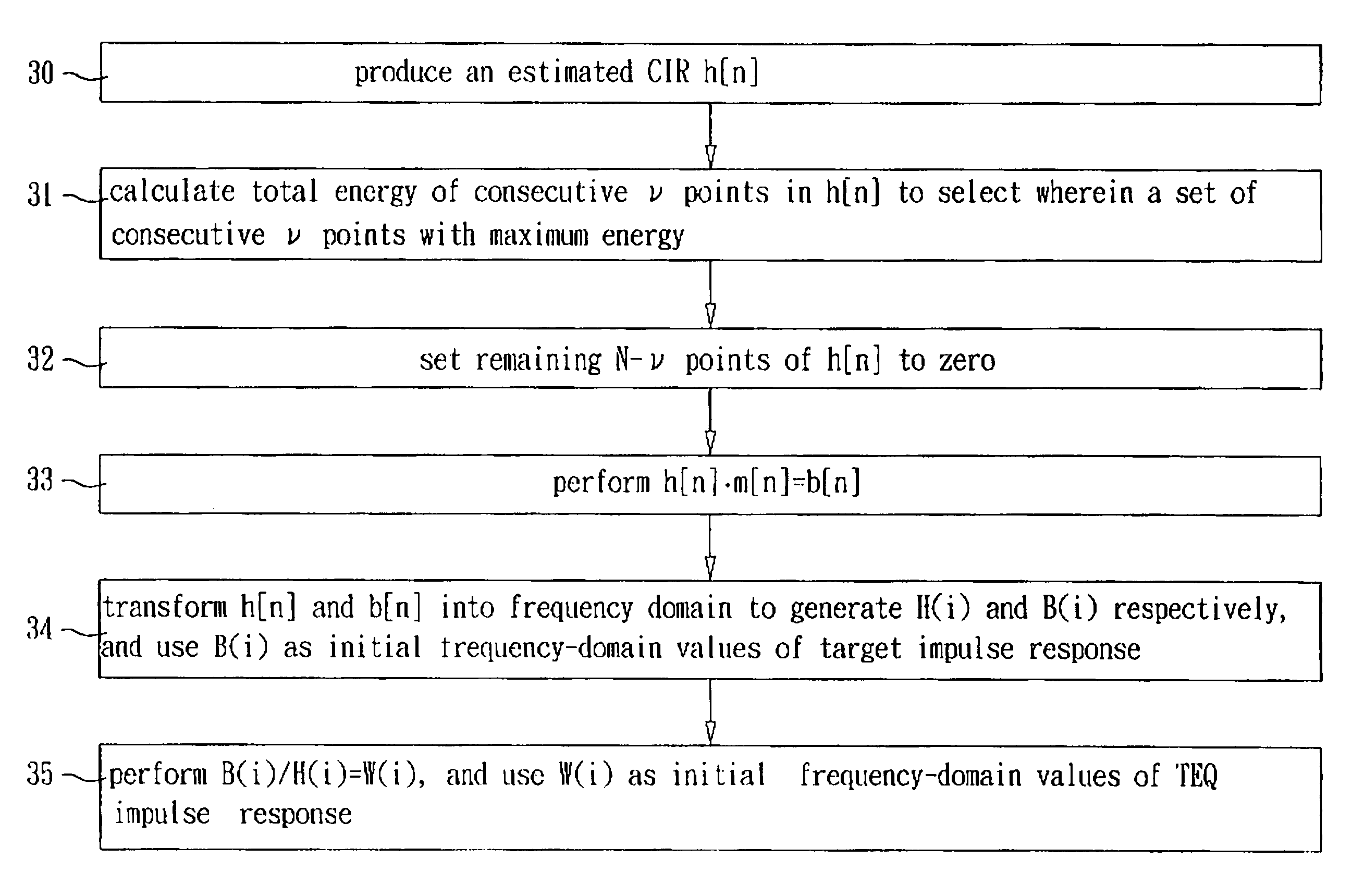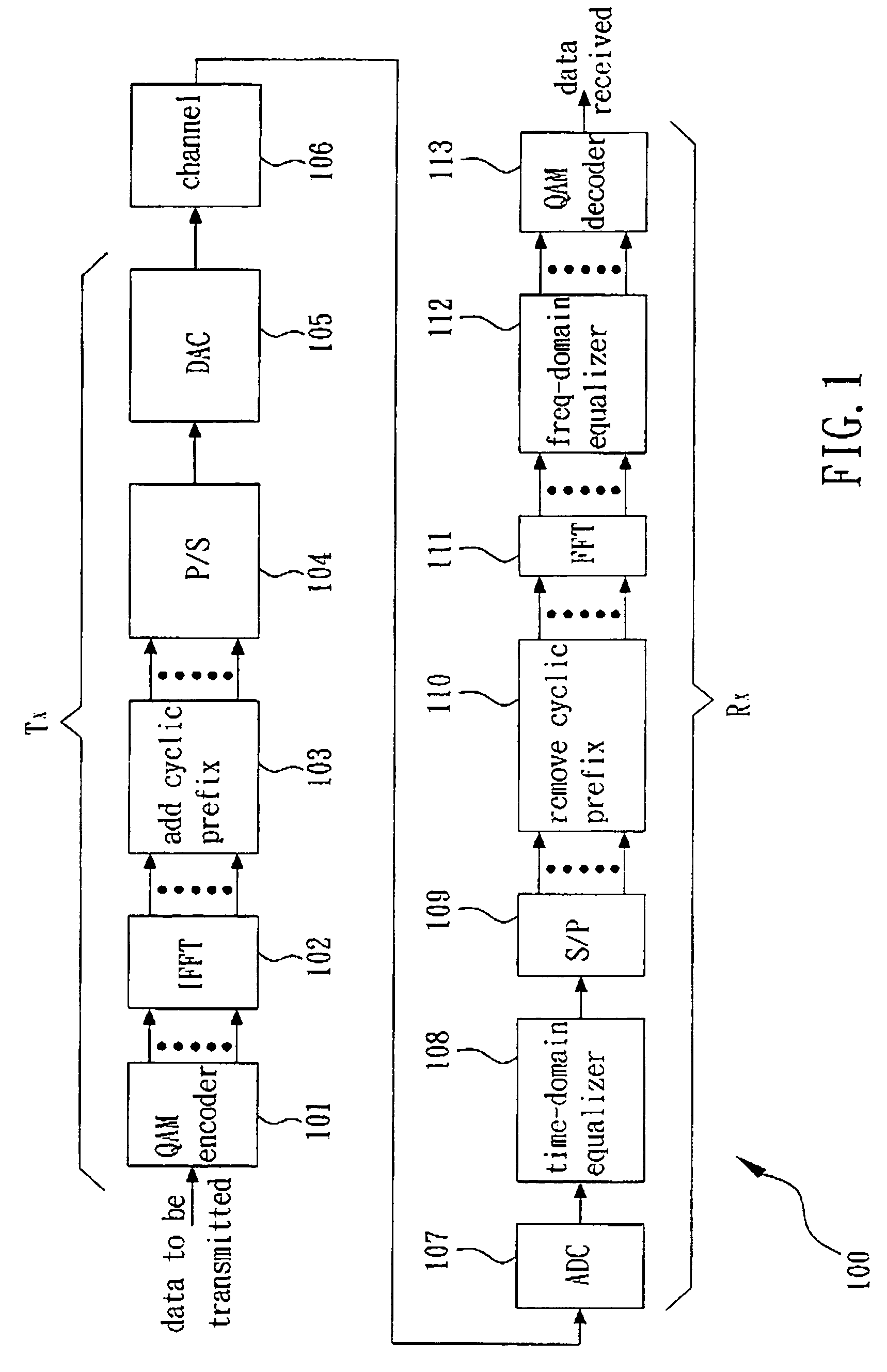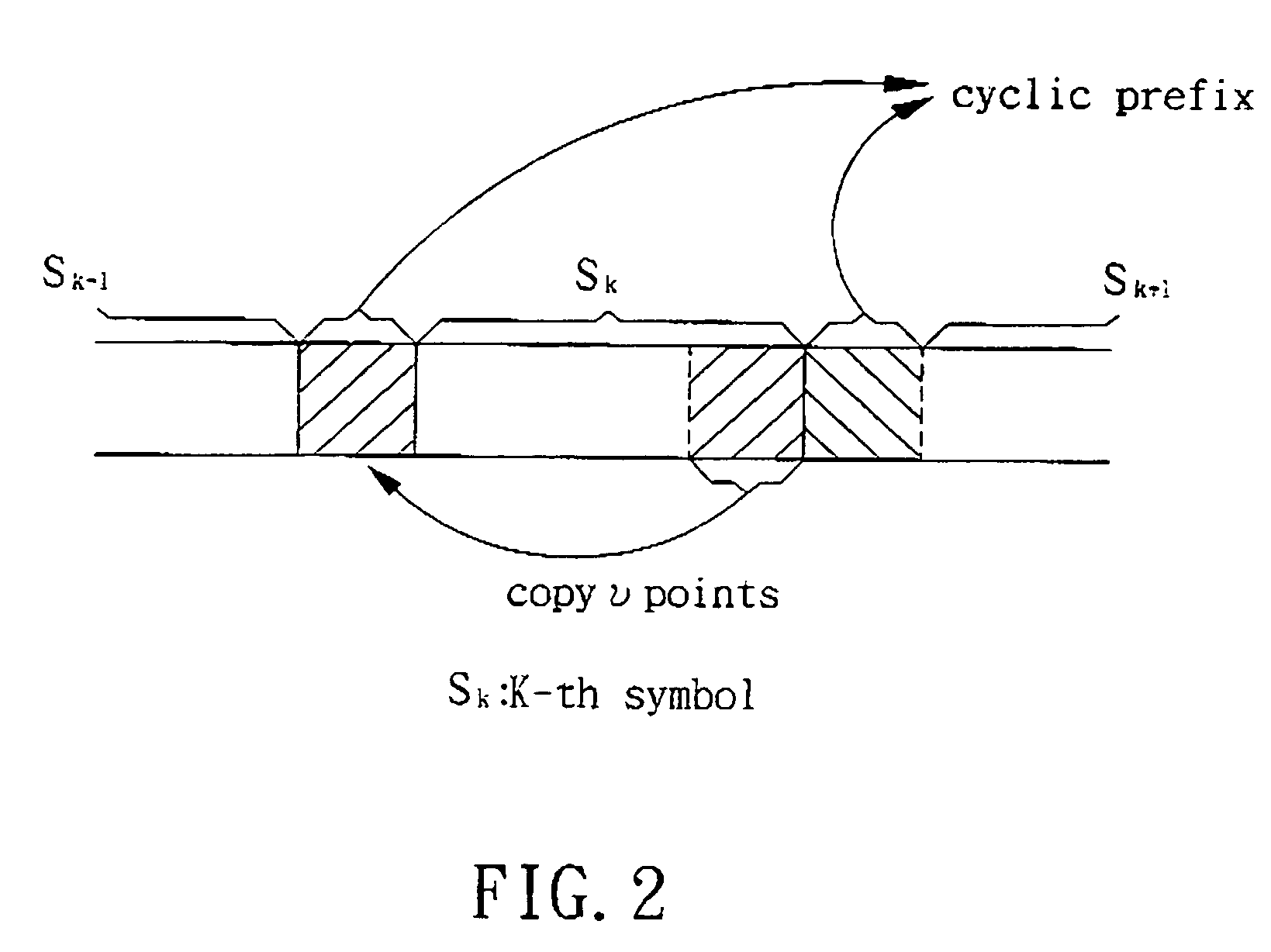Method for initialization and stepsize control of time-domain equalizer in multi-carrier communication system
a multi-carrier communication system and time-domain equalizer technology, applied in the field of multi-carrier communication system, can solve the problems of frequent divergence of results, unreliable adaptation results, and inability to adapt to the speed of the converging speed, so as to improve the performance of the teq
- Summary
- Abstract
- Description
- Claims
- Application Information
AI Technical Summary
Benefits of technology
Problems solved by technology
Method used
Image
Examples
first embodiment
[0021]FIG. 3 is a flow chart of the method for determining the initial values of frequency-domain TEQ impulse response W[n] and target impulse response B[n] according to the present invention. As mentioned above, the TEQ 108 is used to shorten channel impulse response (CIR) of the multi-carrier communication system 100. The CIR is represented by a N-point sequence h[n], n=0˜N−1. The communication system 100 encodes data as symbols for transceiving, wherein each symbol comprises N sampling points and a cyclic prefix with ν sampling points.
[0022]As shown in FIG. 3, the first embodiment for determining the initial values of frequency-domain TEQ impulse response W[n] and target impulse response B[n], which is called the Time-domain Window Mask method in the specification, includes steps of:[0023]30 producing an estimated CIR h[n] according to the received symbols which are known by both of the receiver and the transmitter;[0024]31 calculating the total energy of each group of consecutiv...
second embodiment
[0038]FIG. 5 is a flow chart of the method for determining the initial values of frequency-domain TEQ impulse response W[n] and target impulse response B[n] according to the present invention. The method includes steps of:[0039]50 producing an estimated CIR h[n] according to the received symbols which are known by both of the receiver and the transmitter;[0040]51 calculating the total energy of each group of consecutive ν−1w points and selecting the group of consecutive ν−1w points with the maximum energy, wherein 1w is the length of the TEQ impulse response;[0041]52 removing the group of consecutive ν−1w points with the maximum energy from h[n], combining the remaining N−ν+1w points, and padding zero to the last ν−1w points of h[n] to produce a new N-point sequence h′[n];[0042]53 transforming h′[n] into frequency domain to generate H′(i), i=0˜N−1;[0043]54 determining W(i) which is the reciprocal of H′(i), i=0˜N−1, wherein W(i) is the initial value of the frequency-domain TEQ impuls...
PUM
 Login to View More
Login to View More Abstract
Description
Claims
Application Information
 Login to View More
Login to View More - R&D
- Intellectual Property
- Life Sciences
- Materials
- Tech Scout
- Unparalleled Data Quality
- Higher Quality Content
- 60% Fewer Hallucinations
Browse by: Latest US Patents, China's latest patents, Technical Efficacy Thesaurus, Application Domain, Technology Topic, Popular Technical Reports.
© 2025 PatSnap. All rights reserved.Legal|Privacy policy|Modern Slavery Act Transparency Statement|Sitemap|About US| Contact US: help@patsnap.com



